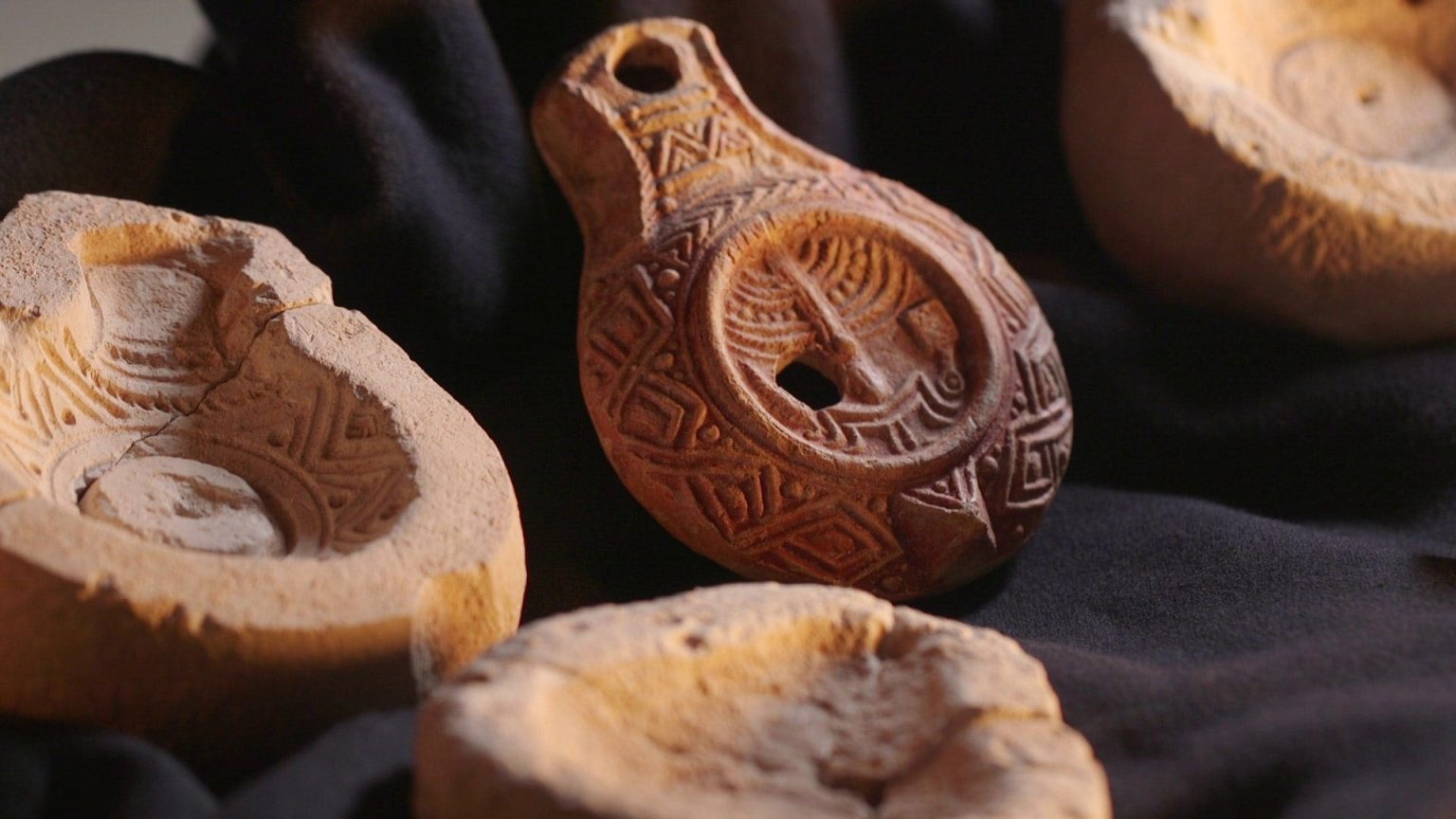Israeli officials announced the discovery of a unique oil lamp dating back to the fourth century, just in time for Hanukkah. The lamp was found near the Mount of Olives in Jerusalem and dates back to the Late Roman Empire. It features depictions of symbols associated with the Second Temple, such as an incense shovel, a menorah, and a lulav. The exceptional artistic workmanship and the presence of soot marks from its last use nearly 1,700 years ago make this artifact rare and fascinating.
During the Late Roman Empire, Christianity became the favored religion, leading to the abandonment of Roman polytheism. Despite this shift, there were still a significant number of Jews in Israel who faced persecution by the Romans. In the fourth century, Jews who lived in Jerusalem were rare, making the discovery of the oil lamp on the Mount of Olives even more surprising. The lamp is a rare material trace of Jewish presence during that period, shedding light on Jewish cultural and religious life in Jerusalem from the 3rd to 5th centuries CE.
Excavation Director Michael Chernin noted the lamp’s significance in providing insight into Jewish life during the Roman Empire. The craftsman who created the lamp dedicated significant time and effort to its decoration, using delicately carved limestone molds and intricate designs. Made using drills and chisels, the lamp’s two-part molds allowed the potter to press the clay and create the final product. It is believed that the lamp belonged to a Jew who purchased it for its religious significance and as a memorial to the Second Temple.
The oil lamp is now on display at the Jay and Jeanie Schottenstein National Campus for Archaeology in Jerusalem, offering visitors a glimpse into the past and the opportunity to explore this rare artifact. The lamp’s intricate design, historical significance, and connection to Jewish heritage make it a valuable addition to Israel’s archaeological treasures. Its presence during the Festival of Lights adds a special touch to the exhibit, showcasing the rich cultural history of the region and honoring the Jewish heritage associated with the Second Temple and religious symbolism depicted on the lamp.
The discovery of the oil lamp has sparked interest among historians, archaeologists, and the general public, offering a unique glimpse into the lives of Jews in Jerusalem during the Late Roman Empire. The lamp’s use and intricate design reflect the cultural and religious practices of the time, providing valuable evidence of Jewish presence in the area during the 3rd to 5th centuries CE. The artifact’s well-preserved state, with soot marks from its last use, further enhances its appeal and historical value, making it a remarkable find in the field of archaeology.
Overall, the discovery of the oil lamp near the Mount of Olives in Jerusalem has shed light on Jewish cultural and religious life during the Late Roman Empire. The lamp’s intricate design, symbolic depictions, and historical significance make it a valuable addition to Israel’s archaeological heritage. Its display at the Jay and Jeanie Schottenstein National Campus for Archaeology allows the public to appreciate the artifact’s beauty and learn more about the Jewish presence in Jerusalem centuries ago. The lamp serves as a tangible link to the past, connecting modern-day visitors with the rich history and heritage of the region.


